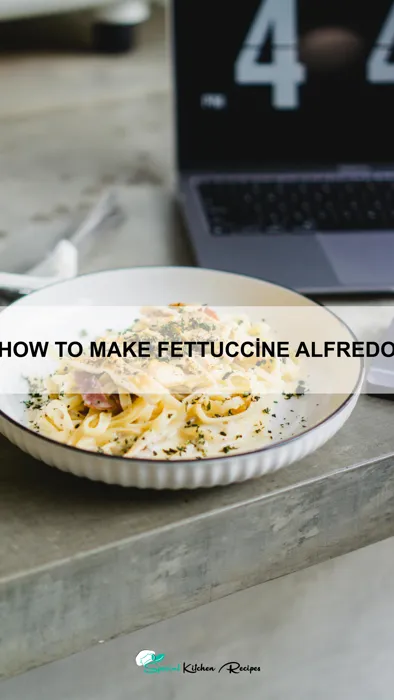Fettuccine Alfredo, a seemingly simple dish of pasta tossed in a creamy Parmesan sauce, boasts a surprisingly rich and fascinating history. Contrary to popular belief, it’s not a centuries-old Italian tradition passed down through generations. Instead, its origins lie in the early 20th century, specifically in Rome. The dish was invented around 1914 by Alfredo di Lelio, who owned a restaurant near Piazza Augusto Imperatore. Legend has it that he created the dish for his ailing wife, Inés, hoping the rich, buttery sauce would aid her recovery. Its initial popularity was largely confined to Rome, with Alfredo di Lelio even patenting his recipe and method of preparation.
The dish’s international fame arrived much later, largely thanks to Hollywood. In the 1950s, American actress Mary Pickford and her husband Douglas Fairbanks Jr. dined at Alfredo’s restaurant in Rome and were so enamored with the Fettuccine Alfredo that they publicized it extensively upon their return to the United States. This sparked a wave of interest, catapulting the dish to global recognition. Interestingly, while Alfredo di Lelio’s original recipe was relatively simple, containing only butter, Parmesan cheese, and pasta, contemporary versions often include cream or other additions, leading to significantly higher calorie counts. A single serving of a creamy Alfredo can easily contain over 700 calories, a stark contrast to the lighter original.
Today, Fettuccine Alfredo remains a beloved dish worldwide, a testament to its simple elegance and comforting nature. Its cultural significance is less about deep-rooted tradition and more about a story of culinary innovation and unexpected global success. It’s a dish that transcends geographical boundaries, demonstrating the power of a simple, delicious meal to capture the world’s imagination. While variations abound, the core ingredients and the story behind its creation continue to hold a special place in culinary history, solidifying its position as one of the most popular and recognizable pasta dishes globally. The dish’s enduring popularity is a testament to the power of a simple, yet satisfying, culinary creation.
Ingredients and Measurements
Creating a truly delicious Fettuccine Alfredo hinges on the quality and precise measurement of your ingredients. Don’t skimp on the good stuff! We’ll be focusing on a classic recipe, easily adaptable to your taste preferences later.
Fettuccine Pasta: You’ll need 1 pound (450g) of high-quality fettuccine pasta. Look for dried pasta made with durum wheat semolina for the best texture and ability to hold the creamy sauce. Fresh pasta works wonderfully too, but requires a slightly shorter cooking time – adjust accordingly based on package instructions. Avoid using angel hair or other thin pasta varieties, as they tend to get lost in the sauce.
Butter: We’re using 1 cup (2 sticks or 227g) of unsalted butter. Unsalted allows you to control the salt level in the final dish. Use high-quality butter; it significantly impacts the flavor of the sauce. Consider using European-style butter for a richer, more nuanced taste.
Parmesan Cheese: This is a crucial ingredient. You’ll need 1 ½ cups (approximately 150g) of freshly grated Parmesan cheese. Pre-grated cheese often contains cellulose which can prevent the sauce from achieving the desired creamy consistency. Invest in a good grater and grate the cheese yourself just before making the sauce for the best flavor and texture. Use a hard, aged Parmesan for the most intense flavor.
Heavy Cream: 1 cup (240ml) of heavy cream provides the luxurious creaminess to the sauce. Do not substitute with half-and-half or milk; the higher fat content of heavy cream is essential for creating the right consistency. Use full-fat heavy cream for optimal results.
Garlic: 2-3 cloves of garlic, minced finely. Adjust the amount to your preference; start with less and add more if needed. Mincing the garlic finely ensures even distribution throughout the sauce and prevents large chunks from overpowering the dish.
Salt and Black Pepper: To taste. Season generously with freshly ground black pepper and add salt as needed, keeping in mind the saltiness of your Parmesan cheese. Taste the sauce as you go and adjust seasoning accordingly. Freshly ground black pepper elevates the overall flavor profile.
Optional additions: Consider adding a pinch of nutmeg for a warm, subtle flavor enhancement. Some recipes incorporate a touch of white wine for added depth of flavor. Remember to adjust the cooking time and seasoning if adding any extra ingredients.
Equipment List
Making a delicious Fettuccine Alfredo requires the right tools to ensure smooth and efficient cooking. While you might already have most of these items in your kitchen, having the correct equipment will significantly improve the outcome.
Large Pot (at least 6-quart): You’ll need a spacious pot to cook a sufficient amount of pasta. A 6-quart pot is ideal for accommodating at least 1 pound of fettuccine and ample water for proper boiling. Smaller pots may lead to overcrowding and unevenly cooked pasta.
Colander: A sturdy colander is crucial for draining the cooked fettuccine quickly and efficiently. Choose a colander large enough to hold the entire batch of pasta without straining it. Avoid using a colander with small holes, as this can clog and slow down the draining process.
Wooden Spoon or Spatula: A wooden spoon or spatula is essential for stirring the pasta while it cooks, preventing sticking and ensuring even cooking. Avoid using metal utensils as they can scratch your pot’s surface.
Measuring Cups and Spoons: Accurate measurements are key to achieving the perfect Alfredo sauce consistency. Invest in a reliable set of measuring cups and spoons to accurately measure ingredients like butter, cream, and Parmesan cheese.
Sauce Pan (medium-sized): A medium-sized saucepan is perfect for preparing the Alfredo sauce. Choose a saucepan with a non-stick surface to prevent the sauce from sticking and burning. A saucepan with a heavy bottom will also help maintain even heat distribution.
Whisk: A whisk is vital for creating a smooth and creamy Alfredo sauce. It helps incorporate the butter and cheese smoothly, creating a luscious texture. A balloon whisk is particularly effective for this task.
Tongs or Serving Spoons: Tongs or serving spoons are necessary for gently transferring the cooked fettuccine from the colander to the sauce pan and then serving the finished dish. Using tongs prevents breakage and maintains the pasta’s shape.
Serving Bowl or Platter: A large serving bowl or platter is needed to present your delicious Fettuccine Alfredo. Choose one that complements your dining style and adequately holds the finished dish.
Optional: Pasta Machine (for homemade fettuccine): If you are making your own fettuccine from scratch, a pasta machine will help you create perfectly even and consistent noodles. While not essential, it elevates the experience and allows for greater control over the pasta’s texture.
Pasta Preparation
The foundation of a great Fettuccine Alfredo lies in perfectly cooked pasta. We’ll be using 1 pound (450g) of fettuccine for this recipe. Choose high-quality, dried fettuccine for the best texture and flavor. Fresh pasta can also be used, but cooking times will need to be adjusted accordingly – check the package instructions.
Begin by bringing a large pot of salted water to a rolling boil. Use a pot large enough to comfortably hold the pasta without overcrowding. Overcrowding will result in uneven cooking and sticking. The general rule of thumb is to use at least 6 quarts (5.7 liters) of water for 1 pound of pasta.
Once boiling, generously salt the water. Don’t be shy with the salt! This seasons the pasta from the inside out, contributing significantly to the overall flavor. Aim for a salinity level similar to that of seawater – it should taste noticeably salty.
Carefully add the fettuccine to the boiling water, ensuring it’s fully submerged. Stir gently to prevent sticking. Set a timer for 10-12 minutes, or according to the package directions. The pasta should be al dente, meaning firm to the bite, not mushy or soft.
During the cooking process, taste-test the pasta frequently towards the end of the cooking time. This will help you determine the perfect level of doneness. If you find it’s nearing the desired al dente stage, start checking every minute.
Once the pasta reaches al dente, immediately drain it in a colander. Reserve about 1 cup of the starchy pasta water before draining. This starchy water is crucial – it helps create a creamy, emulsified sauce that clings beautifully to the pasta.
After draining, immediately add the pasta back to the pot. This prevents sticking and helps maintain the heat for the next step, where we will combine the pasta with the Alfredo sauce. Don’t rinse the pasta, as the residual starch is essential for the sauce’s emulsification.
Your perfectly cooked fettuccine is now ready to be tossed with the luscious Alfredo sauce. Work quickly to prevent the pasta from cooling down too much.
Sauce Preparation (including making the Alfredo Sauce)
The Alfredo sauce is the heart of this classic dish, and its creamy texture and rich flavor are paramount. We’ll be making a classic, from-scratch Alfredo sauce, avoiding the shortcuts that often compromise taste and quality. Proper technique and high-quality ingredients are key.
Begin by gathering your ingredients: 1 cup (2 sticks) of unsalted butter, 2 cups of freshly grated Parmesan cheese (grating your own ensures superior flavor and texture compared to pre-grated), and 1/2 cup of heavy cream. Ensure your butter is softened but not melted; room temperature is ideal. You’ll also need salt and freshly ground white pepper to taste. A pinch of nutmeg is optional, adding a subtle warmth to the sauce.
In a medium-sized saucepan over medium-low heat, melt the butter completely. Avoid browning the butter; this will impart a bitter taste. Once melted, reduce the heat to low and gradually whisk in the Parmesan cheese, a little at a time. This slow incorporation prevents clumping and ensures a smooth, creamy consistency. Continue whisking until the cheese is fully melted and incorporated into the butter.
Next, stir in the heavy cream. Whisk constantly to prevent the sauce from separating or scorching. Let the sauce simmer gently for about 2-3 minutes, stirring continuously, allowing it to thicken slightly. The sauce should be smooth and luxurious, coating the back of a spoon evenly.
Finally, season the sauce with salt and freshly ground white pepper to taste. Remember that Parmesan cheese is already salty, so start with a small amount and adjust accordingly. A pinch of nutmeg can be added at this stage if desired. Taste and adjust seasoning as needed. The sauce should be perfectly balanced, neither too salty nor too bland.
Once the sauce is ready, keep it warm over very low heat while you cook your fettuccine. Do not let the sauce boil, as this can cause it to separate. The ideal Alfredo sauce is smooth, creamy, and rich, reflecting the quality of the ingredients and the care taken in its preparation.
Professional Tip: For an even richer flavor, consider using a combination of Parmesan and Pecorino Romano cheese. The Pecorino Romano adds a sharper, more pungent note that complements the Parmesan’s nuttiness.
Combining Pasta and Sauce
The moment of truth! Combining your perfectly cooked fettuccine with the luscious Alfredo sauce requires a delicate touch to achieve the ideal creamy, coating consistency. Timing is crucial here; you want to add the pasta while the sauce is still warm and vibrant, preventing it from becoming too thick or separating.
First, ensure your fettuccine is perfectly al dente. This means it should be cooked through but still possess a slight firmness to the bite. Drain the pasta, reserving about 1/2 cup of the starchy pasta water. This is a secret weapon for achieving that perfect creamy texture. The starch in the water helps emulsify the sauce and prevents it from becoming too thick.
Immediately add the drained fettuccine to the warm Alfredo sauce in your serving bowl or a large, wide pan. Do not rinse the pasta; the residual starch on the noodles is essential for the sauce to cling properly. Gently toss the pasta and sauce together using tongs or two large spoons. This prevents the pasta from breaking and ensures even coating.
Now, here’s where the reserved pasta water comes into play. Begin adding the pasta water, a tablespoon at a time, while continuously tossing the pasta. This gradually thins the sauce to the desired consistency. Taste and adjust as you go. You may not need all the reserved water; the goal is a creamy sauce that coats each strand of fettuccine without being overly watery.
If the sauce is still too thick after adding all the pasta water, you can add a splash of milk or cream, again, a tablespoon at a time, while continuing to toss. Avoid adding too much liquid at once, as this can lead to a watery sauce. Continue tossing until every strand of pasta is evenly coated in the creamy Alfredo sauce. The sauce should cling beautifully to the pasta, creating a rich and decadent dish.
Once the desired consistency is achieved, remove the pasta from the heat. Serve immediately, garnished with freshly grated Parmesan cheese and a sprinkle of freshly ground black pepper. Serve immediately for the best taste and texture, as the pasta can become gummy if left to sit for too long.
Serving Suggestions
Your creamy, dreamy Fettuccine Alfredo is ready! Now, let’s explore some delightful ways to serve this classic dish and elevate it to the next level. The beauty of Alfredo is its simplicity, allowing for both classic and creative presentations.
Classic Serving: The most straightforward approach is to serve the fettuccine directly from the pan. A generous portion (approximately 1 ½ – 2 cups) per person is ideal. Ensure the pasta is evenly coated in the sauce, and consider a light sprinkle of freshly grated Parmesan cheese (about 1-2 tablespoons per serving) just before serving. A simple garnish of fresh parsley adds a touch of vibrancy.
Elevated Presentation: For a more elegant presentation, consider plating individual portions. Use serving spoons to carefully transfer the fettuccine onto warmed plates. This allows for better control over portion size and creates a visually appealing presentation. Avoid overcrowding the plate; let the creamy sauce be visible.
Adding Protein: To make your Alfredo a more substantial meal, consider adding grilled chicken, shrimp, or pan-seared scallops. About 4-6 ounces of protein per person is a good guideline. Ensure the protein is cooked thoroughly and cut into bite-sized pieces before gently tossing it with the fettuccine and sauce. Adding the protein at the very end prevents it from becoming dry.
Vegetable Enhancements: Introduce some freshness and nutrients with the addition of vegetables. Sautéed spinach, wilted kale, or roasted asparagus are excellent choices. Add approximately ½ cup of cooked vegetables per serving, gently folding them into the pasta. Avoid overcooking the vegetables; they should retain their texture and vibrant color.
Side Dishes: While the Alfredo itself is rich and satisfying, a simple side dish can complement the meal beautifully. A light salad with a vinaigrette dressing or a crusty bread roll are both excellent options. Avoid heavy or overly rich side dishes to prevent overwhelming the palate.
Garnish Ideas: Enhance the visual appeal and flavor profile with creative garnishes. Consider freshly ground black pepper, a sprinkle of toasted pine nuts, or a drizzle of truffle oil for an upscale touch. Fresh herbs like basil or chives also add a pop of color and aroma.
Serving Temperature: Serve your Fettuccine Alfredo immediately after preparation for optimal enjoyment. The sauce is best when warm and creamy. Avoid letting it sit for extended periods as it may thicken excessively or become cold.
Recommendations
For the best Fettuccine Alfredo experience, we highly recommend using freshly made pasta. The texture is unparalleled, and the subtle differences in taste are noticeable. If using dried pasta, be sure to cook it al dente to prevent a mushy texture when combined with the creamy sauce.
Serving Suggestions: This classic dish is delicious on its own, but you can elevate it further. Consider adding grilled chicken, shrimp, or sauteed vegetables like broccoli or asparagus for added protein and nutrients. A sprinkle of freshly grated Parmesan cheese just before serving adds a delightful salty and umami punch. A light garnish of fresh parsley or chives also adds visual appeal and a touch of freshness.
Storage: Leftover Fettuccine Alfredo can be stored in an airtight container in the refrigerator for up to 3 days. Important: The sauce may thicken slightly upon refrigeration. Reheat gently over low heat, adding a splash of milk or cream if needed to achieve the desired consistency. Avoid reheating in the microwave, as this can lead to a grainy texture.
Complementary Dishes: Fettuccine Alfredo pairs beautifully with a crisp green salad to balance the richness of the dish. A simple Caprese salad or a Caesar salad would be excellent choices. For a more substantial meal, consider serving it alongside garlic bread or roasted vegetables. A light white wine, such as Pinot Grigio or Sauvignon Blanc, complements the creamy sauce perfectly.
Nutritional Information (per serving, approximate): The nutritional content will vary depending on the ingredients used and portion size. However, a typical serving of Fettuccine Alfredo contains approximately 500-700 calories, with a high proportion of fat and carbohydrates. It’s a source of protein from the pasta and any added ingredients. For a healthier version, consider using whole wheat pasta and reducing the amount of butter or cream. Always check the nutritional information of your specific ingredients for accurate values.
Important Note: This recipe provides approximate nutritional information. For precise values, use a nutrition calculator and input the specific ingredients and quantities used in your preparation. Remember to adjust portion sizes to meet your individual dietary needs and calorie goals.





